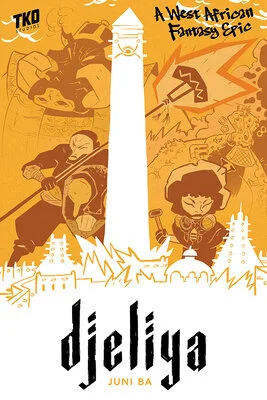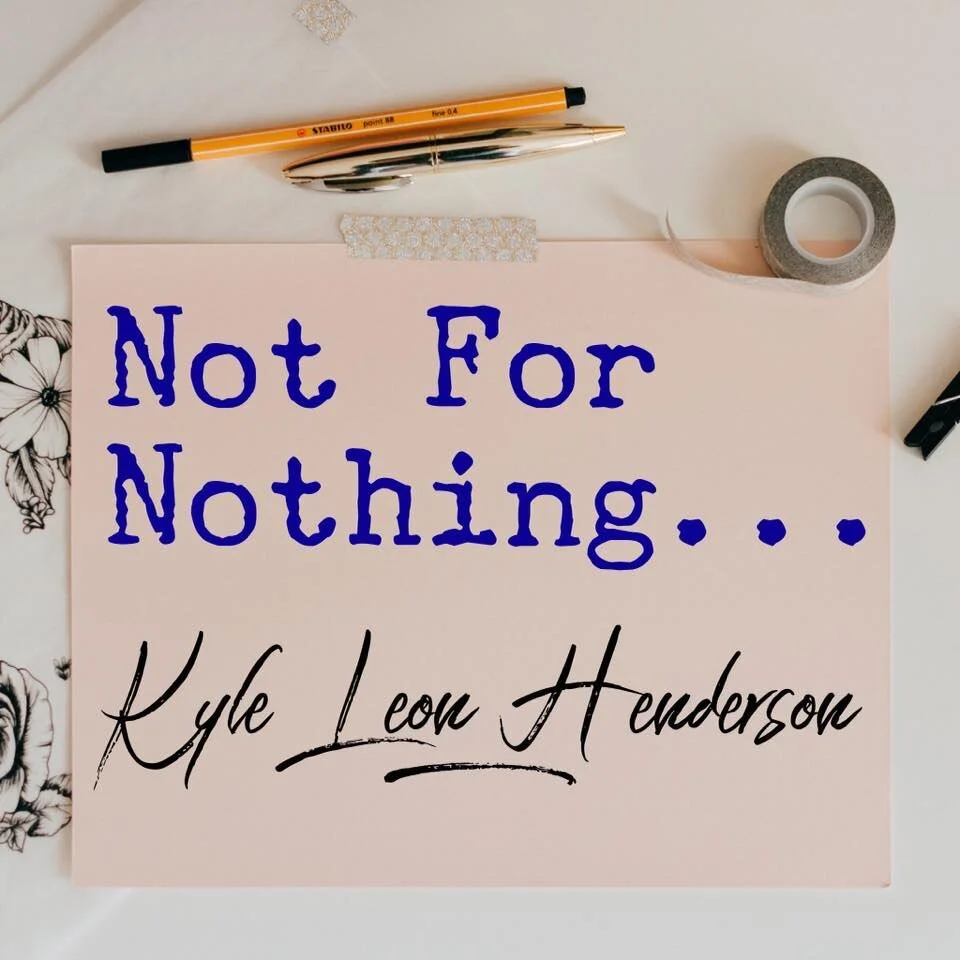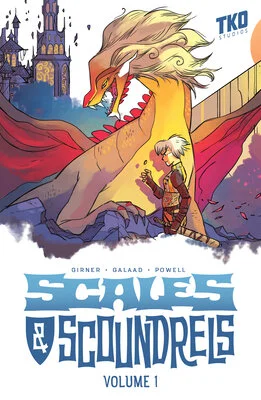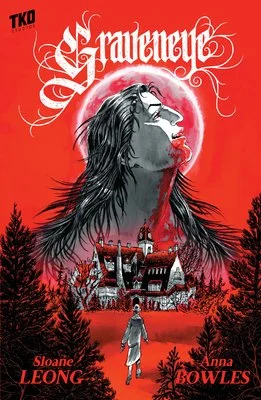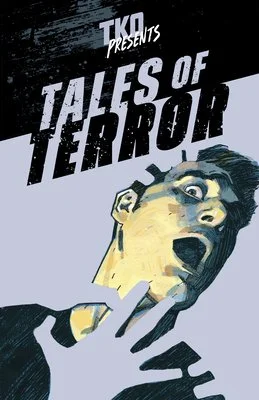Hot Off the Shelf: Djeliya by Juni Ba
[Disclaimer: I received a free copy of this book in exchange for an honest review and I honestly loved it! There’s also an affiliate link if you want to buy a copy.]
This is a no-spoiler review.
I’ll be the first to admit that as a white person from Alabama, I don’t know a thing about West African folklore. But I believe in the power of folklore to unite communities, the enduring relevance of folklore even as societies become more technologically advanced, and the importance of preserving folklore as part of cultural history.
One of the coolest ways I see people doing that is by putting their own spin on folklore tales as a means of bringing them into the future. After all, most folklore begins as an oral tradition and if you’ve ever played a game of telephone then you know how words can get minced and mixed over time. Folklore as a tradition is mutable, so it’s only right that people today should put their own spin on tales that are hundreds or even thousands of years old.
And all this is precisely what intrigued me about Djeliya, a graphic novel by Senegalese author and illustrator Juni Ba. Djeliya is his first graphic novel and he describes his artistic approach as “what happens when the influences of 2000s era Cartoon Network enter the brain of the average Senegalese boy.” The tagline is A West African Fantasy Epic. Sold!
Before we dive in further…
Synopsis:
Inspired by West African folklore and stories handed over centuries, this unique graphic novel follows the adventures of Mansour, last prince of a dying kingdom, and Awa, his loyal Djeliya, or 'royal storyteller' as they journey to meet the great wizard who destroyed their world and then withdrew into his tower, never to be seen again. On their journey they'll cross paths with friend and foe, from myth and legend alike, and revisit the traditions, tales, and stories that gave birth to their people and nurture them still. But what dark secret lies at the heart of these stories, and what purpose do their tellers truly serve?
Because I didn’t know anything about West African folklore prior to reading this graphic novel, the updates and modernizations Juni made to the story didn’t bother me in the way that they might for some people who are story purists. Then again, I’m not the type of person who gets too bent out of shape when a movie doesn’t follow the book exactly, so maybe this is just my personality. Either way, I was able to enjoy the story for what it is instead of some notion about what it “should be,” which was nice!
With graphic novels, so much is communicated through the visuals that my reading comprehension is heavily influenced by how well I connect to the art. From the color palette to the varying panels (it wasn’t just box, box, bigger box, smaller box, box), I was intrigued from the beginning. There are a lot of characters throughout the volume and some repeat in chapters while others don’t, so I did have to read some parts twice just to make sure I was understanding a particular character’s personality and motivations that would lead them to continue to intersect with the main plotline.
One thing I especially appreciated was the dialogue. While written in English, there are little asterisks and notes throughout with Wolof and Twi words and their definitions. Wolof and Twi are two of several languages and dialects that are spoken in Senegal and it was nice to see the characters speaking in a way that’s both authentic to them and accessible to English-reading audiences.
There’s a theme of music throughout the graphic novel. While the folklore is based on oral tradition, that isn’t limited to just speaking––many oral traditions are actually songs that record the history of a people and/or culture. The same is true for the djeli in the book. Awa is a royal storyteller, though she communicates her wisdom primarily as a songstress. At one point Awa and Mansour are scouring the local dump in search of items that Awa might be able to use to make instruments out of, which speaks to the importance of music in Senegalese culture.
Another thing I thought was particularly well done is the plot. In a lot of graphic novels, we see the rise of the evil element or “bad guy” and the “good guys” try to stop the bad guy from ruining everything. In Djeliya, the bad guy, the Wizard Soumaoro, has already destroyed the world, and Awa and Mansour are doing their best to survive in it. There’s no magic solution or somehow going back in time to stop Soumaoro and un-destroy the world––there’s only living in the now and trying to make things better in the future. Though set in a fantasy world, that feels more realistic and true to life to me. It’s rare that we’re able to identify and stop bad things from happening before they occur; more often we’re living in the aftermath and have to work to remedy the wrongs of the past.
Yet another thing I loved about Djeliya is just that––the graphic novel is about the djeli, Awa. Mansour may be royalty and Awa may be the royal storyteller who serves Mansour’s family, but Awa is the star of the show. For once, the royal takes a backseat to the advisor and the story is all the better for it. The graphic novel gets meta because it’s ultimately about the importance of storytelling and how stories can change the world. This is especially reflected in the end. I’m not going to spoil it for you, but there are two really well-executed plot twists toward the end and the epilogue is especially satisfying.
I think you’ll really love Djeliya, so I hope you’ll buy a copy! If you do and you’d like to support my work on this blog, feel free to use my Bookshop link.

